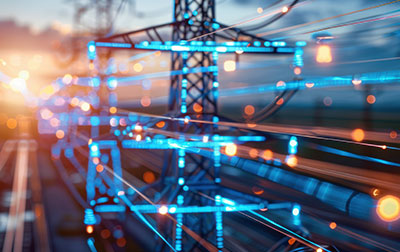Building a sustainable resilient energy future for data centers

Energy expansion is essential to meet growing electrical demand, but it comes with risks such as rapid technology changes, workforce availability limitations, adjustments to capital investment, changes to regulation, and power supply constraints. To mitigate these risks, it's crucial to adopt a collaborative approach that integrates renewable energy sources, enhances energy efficiency, and promotes responsible resource management.
Developing a resilient power infrastructure requires a coordinated effort across multiple stakeholders. Here are six key strategies to strengthen grid reliability while ensuring data centers can scale sustainably:
1. Integrated planning and communication. Utilities and data center operators must collaborate with forward-looking plans. If data centers share data on energy usage patterns and growth projections, utilities can anticipate future demand spikes and make strategic investments in infrastructure. Grid connection applications for data centers seem to be settling on a ~200MW module size, but range from 5MW to as much as 500MW, with some recent examples going higher. (In late February, PSE&G reported interconnection requests surging 1,075% from 400 MW to 4.7 GW in just one year, reflecting unprecedented demand growth from AI-driven data centers.) For the larger loads, utilities don’t typically maintain readily available supply in their short-term expansion plans.
In turn, data centers can design their operations with the grid in mind, incorporating smart load management systems that allow for dynamic adjustments in real time, while including the local utility in development plans even before site selection as certain areas of the grid may have better hosting capacities compared to others.
2. Investing in smart grid technologies: To meet the increasing energy demands of data centers, utilities must accelerate investment in the development and expansion of smart grids systems that incorporate sensors, real-time data analytics, and automated controls across multiple feeders and stations to help balance electrical supply and demand. Through improved system observability and network control, utilities will have access to more precise forecasting and load balancing capabilities, enabling utilities to respond more effectively to sudden shifts in demand from data centers, or sudden dips in supply due to various factors.
3. Energy storage and on-site generation. As renewable energy sources like wind and solar become a larger share of the energy mix, energy storage solutions—such as large-scale battery systems—will be crucial to ensure a steady and reliable supply of power to data centers. Data centers should consider deploying their own on-site power generation systems (e.g., solar panels, fuel cells, gas turbines) to reduce their dependence on the grid during peak periods, and to ensure reliable operations should a fault or power quality issue arise on the local feeder. Longer term on-site generation plans could account for small modular nuclear reactor technologies, which appear to be on track for commercialization before the end of this decade.
Furthermore, advanced and longer-term energy storage technologies are fast developing. One example is a vanadium redux flow technology currently under development for a data center use case. These maturing technologies provide longer term reliability and can load balance with variable renewable energy sources.
4. Advanced cooling technologies. Data centers could also consider alternate solutions for cooling systems like geo-exchange systems, advanced air or vacuum containment solutions, or liquid cooling technologies such as immersion cooling, direct-to-chip liquid cooling, and two-phase immersion cooling. By limiting the energy needs of the cooling system, the energy can instead be used to power additional processors, or a reduced overall load demand for the electric utility to supply.
5. Demand response programs. One way to reduce strain on the grid is through demand response programs, where data centers can temporarily reduce their energy usage during peak demand times in exchange for financial incentives. These programs benefit the grid and help data centers manage their energy costs while improving overall system reliability. Such energy consumption reductions could mean lowering peak demands or be offset by on-site generation or energy storage solutions. The critical aspect of demand response, if no onsite generation or energy storage solution is used to offset reductions from grid supply, is to find elements of the data center load that can be reduced without impacting operations.
6. Decentralization and microgrids. As the digital economy continues to grow, more data centers may look to adopt decentralized energy systems - or microgrids - that can operate independently or in tandem with the main grid. These systems allow data centers to maintain reliable power even during disruptions, ensuring continuity of service while reducing the burden on the broader grid. They can incorporate multiple generation and storage technologies, each to support specific use cases and response times, balancing sustainability with reliability. Such microgrid controllers and inverters provide grid-forming high quality power to meet demanding data center loads.
The future of energy collaboration
The digital economy’s rapid expansion is reshaping the energy landscape, requiring a new level of partnership between utilities and data centers. By embracing integrated planning, smart infrastructure, and decentralized solutions, we can build an energy system that is not just scalable but sustainable.
The choices of today inform the resilience of tomorrow’s energy networks.
Contact us to learn how we’re solving these tough challenges and partnering with clients to support their growing digital demands and minimizing environmental and economic risks.
Read part 1 of this blog series: Resilient power supply: Enabling the future of data center growth.
